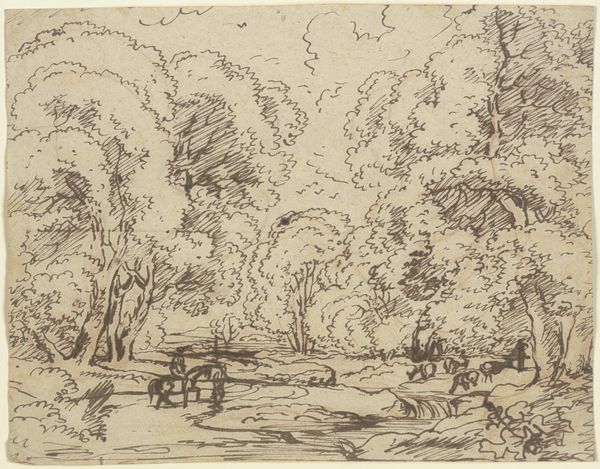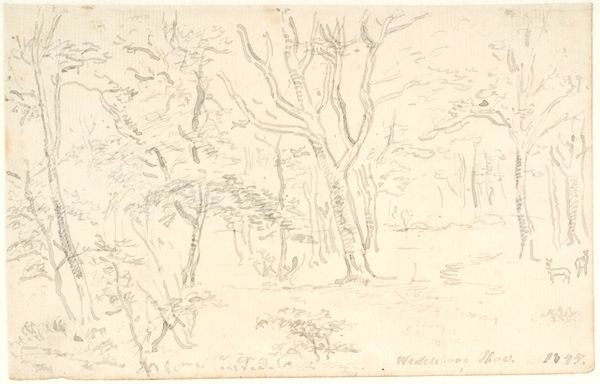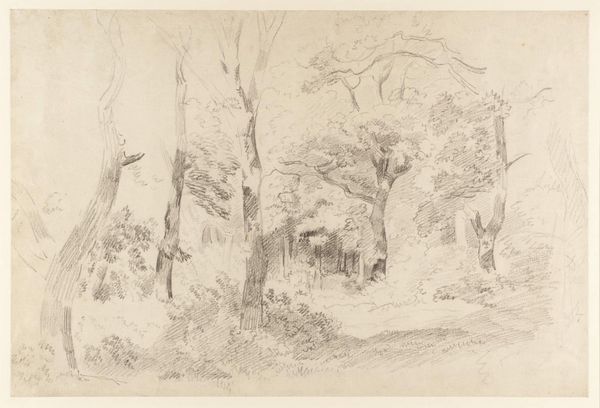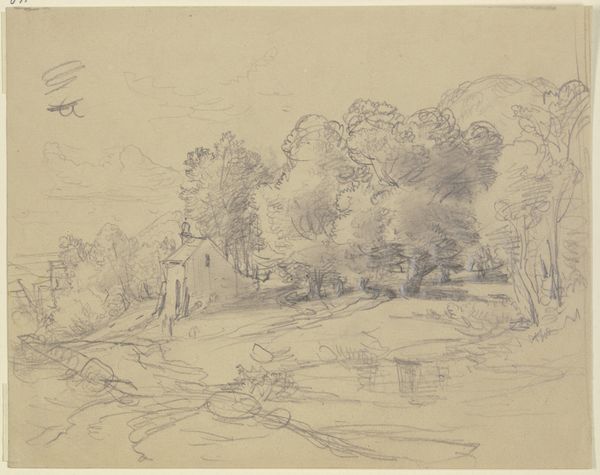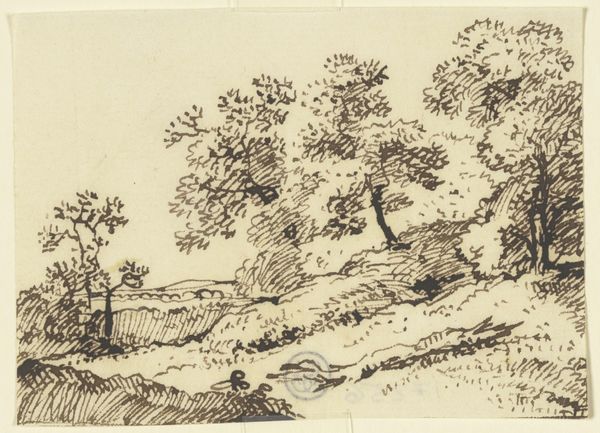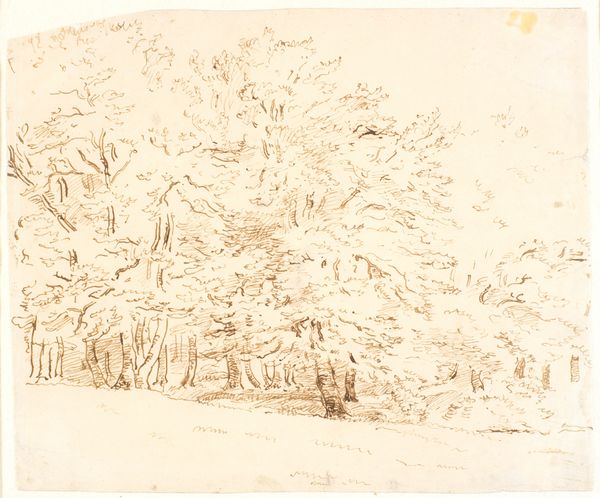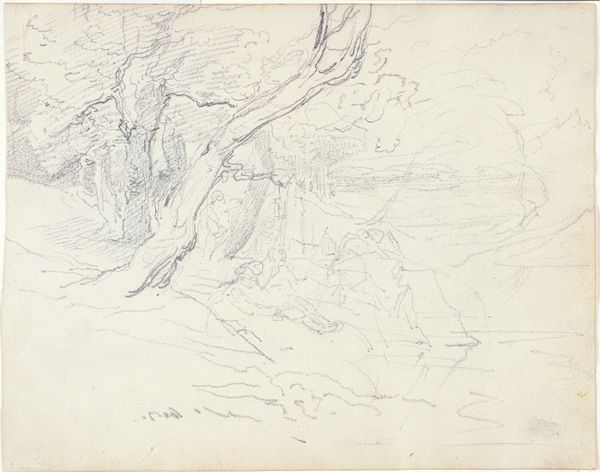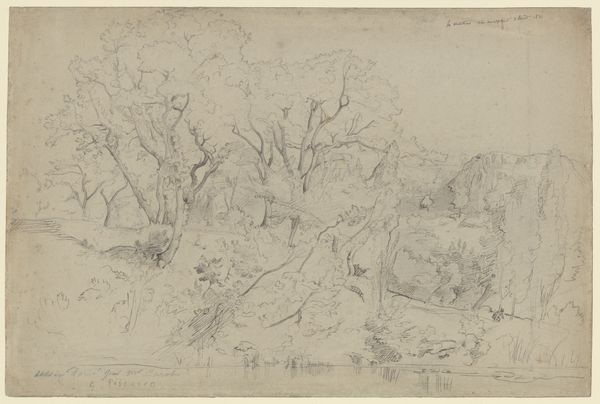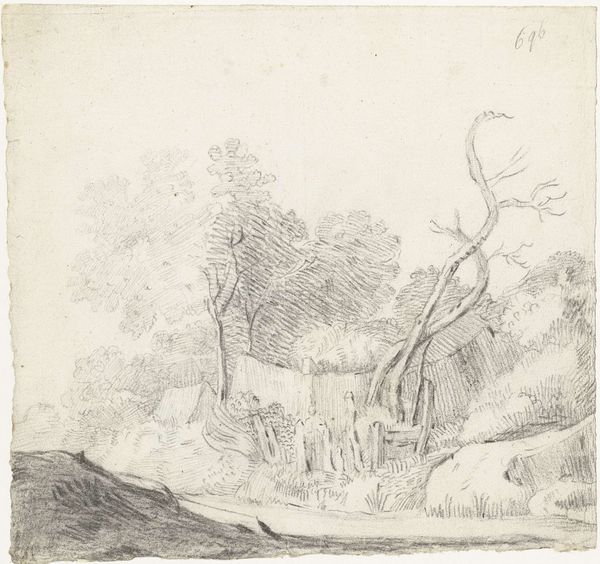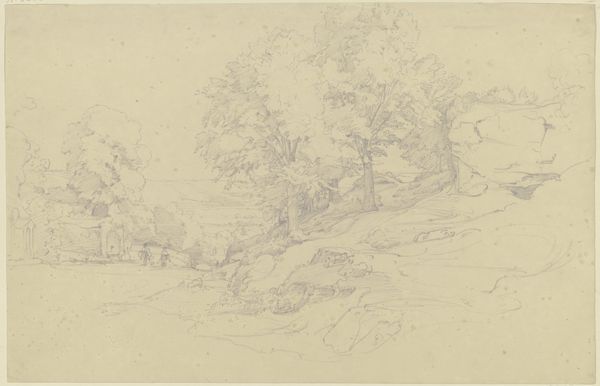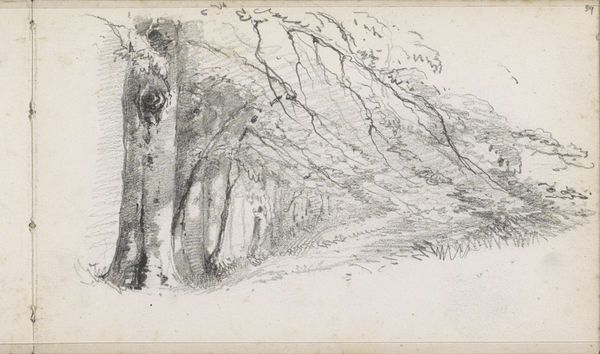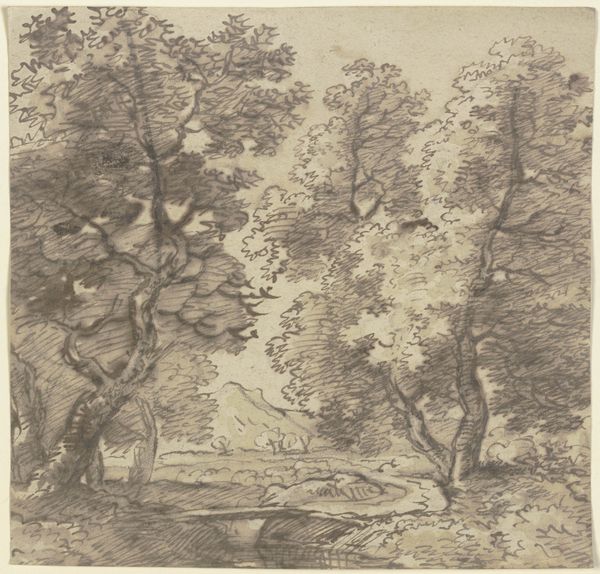
drawing, pencil
#
drawing
#
ink drawing
#
landscape
#
romanticism
#
pencil
Copyright: Public Domain: Artvee
Curator: Alright, let's turn our attention to this subtle but compelling drawing by John Sell Cotman, "Wooded Landscape," created around 1841. Editor: Immediately, I'm struck by the intimacy. The limited tonal range almost forces you to lean in, like overhearing a quiet conversation in the woods. It's a Romantic echo, isn't it? Curator: Absolutely. And given its pencil and ink on paper construction, it seems to suggest a sketching expedition, as well as an observation exercise. I imagine Cotman carefully considered the ready availability of the raw materials on location. Editor: True, that very economy emphasizes the process. Notice the almost frantic hatching in the tree canopies, and the comparatively gentle rendering of the ground. The varying line weights suggest so much. It whispers about the materiality of the trees themselves. Were those trees even used as pulp for paper during that period, do you think? Curator: Good question! Definitely a possibility, and it adds another layer to its eco-consciousness. More immediately, though, this quick study vibrates with a life beyond mere reportage. There's a certain restlessness within the romantic landscape depicted. Editor: Right, but I think you're spot on: its roughness is a deliberate choice, almost a rejection of overly polished academic landscape painting. This artwork feels much closer to craft and emphasizes labor directly through visual presentation of materiality and work marks, than it does high art with an academic process. Curator: It also draws on, pardon the pun, the more traditional aesthetic ideals that valued drawing so highly as an exploratory medium. So that emphasis allows for direct insight, you know? Almost feeling the breath of the wind in the branches as his pencil dances across the page... It’s the soul of observation. Editor: Okay, but the Romantic era still valorized handcraft despite emergent mass-industrialization that threatened traditional skills, and this feels like part of that same move to elevate lived creation and work into high art, or, perhaps even more powerfully, render the false binary separating "labor" from "art" invalid. Curator: Maybe you're right; in this case the distinction sort of blurs, which is lovely. The sketch offers us more than just the facts of trees and light. Editor: Exactly! It provides evidence, so to speak, in graphite and ink, of the very material conditions and social structures the artwork participated in, while seemingly just representing "nature." I can really dig that. Curator: So, together we found in this “simple” landscape drawing an entire forest of ideas, from Romanticism and production to eco-consciousness and the blurred lines of art! Editor: Indeed! It highlights the complicated reality of "landscape," itself constructed both culturally and physically from work, materials, and meaning-making about the world around us.
Comments
No comments
Be the first to comment and join the conversation on the ultimate creative platform.
